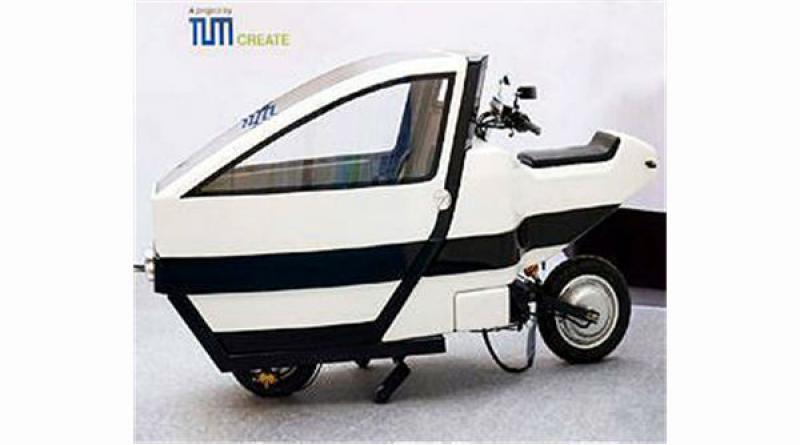Paris e-scooters under pressure to prove green credentials.

Pulling on makeshift roped hooks along a sun-drenched bank of the Seine River in Paris, Youva Hadjali and Edison Gompo fish out two electric scooters -- not the most ecological fate for devices billed as a carbon-free fix for strained urban transport systems.
As city officials vow to rein in the use of wildly popular e-scooters, their short lifespans, along with the energy consumed to build and service them, have many wondering if they are as good for the environment as operators say.
Hadjali and Gompo are part of the "urban patrols" carried out by the US start-up Lime, which says the recovered units are recycled as much as possible -- though the lithium-ion batteries are usually shot.
"Overall in Paris, Lime scooters have saved the equivalent of two days without any cars at all" since they arrived 16 months ago, Arthur-Louis Jacquier, head of French operations, told AFP.
Critics say such claims fail to take into account the carbon emitted in constructing the scooters and the daily collections for recharging the so-called "dockless" vehicles.
Those emissions are compounded by lifespans of barely a year, due to wear and tear but also vandalism.
They were a specific target of activists at the Extinction Rebellion protest in Paris last month, who gathered up a huge pile of the devices to denounce what they labelled "pointless pollution."
"Scooters don't replace cars, they motorise walking trips," one sign said.
Studies indeed show that most scooter trips are replacing walking or biking, with just a third displacing car use, said Jeremiah Johnson of North Carolina State University.
He and his colleagues analysed use in North Carolina's capital, Raleigh, and found the electricity for charging was actually a pretty small contributor to scooters' environmental impact.
But in terms of pollution, scooters most often end up causing a net increase in terms of global warming impacts.
"Forty percent of the CO2 emissions are from driving around to pick these things up (for charging), and about half of the CO2 emissions are from the materials and the manufacturing of the scooter," Johnson told AFP.
- 'Mass transport' -
In the coming weeks, Paris will pick just three operators allowed to keep their scooters on the streets, down from around a dozen which began flooding the city last year.
Lime, which says its charging depots run on so-called clean electricity and plans to use only electric vans for pick-ups, hopes to be one of them.
It also vows to get over some embarrassing growing pains: A few months ago videos emerged showing "juicers," as Lime calls the freelance workers who gather scooters for charging the batteries, using gas-powered electric generators.
"In just a year and a half, we went from being a firm with innovative ideas to a mass transport company," Jacquier said of the early decision to outsource charging, something it has since ruled out.
Even so, operators must also meet the challenge of keeping scooters rolling longer.
"If you are able to achieve a two-year lifetime, which would be a really rugged scooter and with really good anti-vandalism policies... that makes a big difference," Johnson said.
But since September, when Lime launched its Seine searches, some 200 scooters have been pulled out, said Sonthay Detsaboun, who manages the urban patrols.
It's a similar story in Lyon, where in September an environment group pulled out 109 scooters on just one 800-metre (half a mile) stretch along the Rhone, one of two rivers that weave through the city.
- Building a better machine -
At Lime's depot at Arcueil, just south of Paris, the din of clanking metal and power tools suggests vandalism will remain a challenge to profitability -- just as it has been for the city's pioneering Velib bike-sharing system.
Some 200 mechanics keep the place running around the clock, seven days a week, so the fleet can keep rolling.
Every day 1,000 to 1,500 scooters are put back in working order -- common problems include snipped brake cables or spray-painted QR codes, meaning they can't be unlocked.
Lime is upgrading its fleet to put bigger batteries under the floorboard, hopefully extending the life of the most costly -- and environmentally damaging -- component.
Those scooters can go 50 kilometres (30 miles) on a single charge, and have an improved lifespan of 16 to 18 months, Jacquier said.
"We're aiming for a net environmental impact of zero, and therefore 100 percent positive for the planet," he said.
13 November 2019
SPACEDAILY




